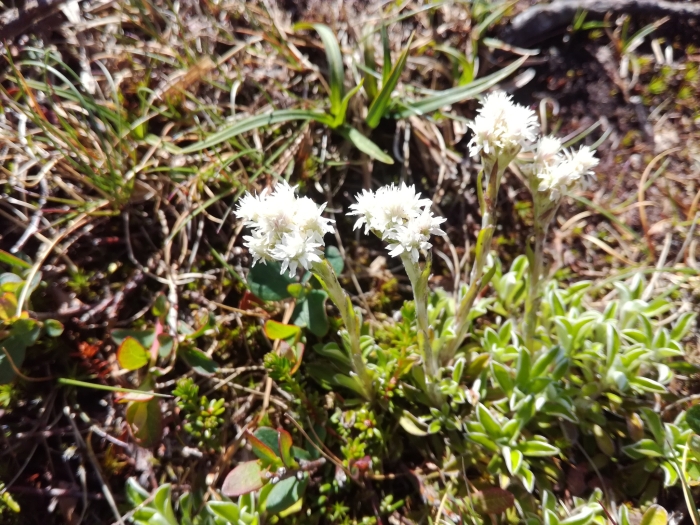Mountain Everlasting
(Antennaria dioica)
Mountain Everlasting (Antennaria dioica)
/
/

Michael D. Pirie
CC BY 4.0










































Estimated Native Range
Summary
Mountain Everlasting is valued for its drought tolerance and ability to thrive in poor soils, making it an excellent choice for rock gardens, alpine gardens, and as ground cover in sunny, well-drained areas. It is also appreciated for its low maintenance requirements and the textural contrast its foliage provides. While it prefers full sun, it can tolerate light shade and requires minimal water once established. It is not commonly affected by diseases or pests, but overwatering can lead to root rot. Its ability to reproduce asexually through stolons or sexually by seeds allows for easy propagation and establishment in suitable conditions. However, gardeners should be aware that it may not flower as prolifically in areas with hot summers.CC BY-SA 4.0
Plant Description
- Plant Type: Herb
- Height: 0.2-0.3 feet
- Width: 0.8-1.5 feet
- Growth Rate: Slow
- Flower Color: Cream, Pink, White
- Flowering Season: Spring
- Leaf Retention: Evergreen
Growth Requirements
- Sun: Full Sun
- Water: Low
- Drainage: Medium, Slow
Common Uses
Bank Stabilization, Bee Garden, Bird Garden, Border Plant, Butterfly Garden, Deer Resistant, Drought Tolerant, Fire Resistant, Groundcover, Low Maintenance, Potted Plant, Rock Garden, Salt Tolerant
Natural Habitat
Alpine and subalpine zones, dry meadows, and open grasslands across Europe and Asia
Other Names
Common Names: Littleleaf Pussytoes, Cat’s-Foot, Rose Pussytoes, Stoloniferous Pussytoes, Catsfoot, Cudweed, Pussytoes, Stoloniferous Pussytoes, Kattefod, Zweihaüsiges Katzenpflötchen
Scientific Names: , Antennaria dioica, Gnaphalium dioicum, Antennaria dioica var. gallica, Antennaria parviflora, Antennaria dioica var. borealis, Antennaria dioeca, Antennaria hibernica, Antennaria dioica var. dioica, Antennaria montana
GBIF Accepted Name: Antennaria dioica (L.) Gaertn.